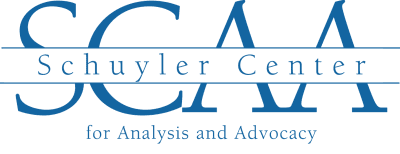On December 1, 2021, Governor Hochul signed into law the Child Poverty Reduction Act.
What does that mean for New York State and its residents?
The new law amends Social Services Law and declares that New York State should take steps necessary to reduce child poverty by 50% in the next eleven years – and it holds the state accountable to do just that. It is a road map toward a bold poverty reduction goal.
The Act establishes a Child Poverty Reduction Advisory Council to research policy ideas and monitor progress toward the goal. It also sets a timeline for Advisory Council actions and state milestones.
The Advisory Council, in developing policies and procedures, is directed to consider the disproportionate impact poverty has on different racial and ethnic communities and what policies can alleviate those disparities.
The Advisory Council is expected to examine:
- Improving access to public benefits for individuals, regardless of their immigration status;
- Policies that assist families to obtain and maintain financial stability, including educational advancement and employment that provides a living wage;
- Other factors that may impact a family, parent, or child’s ability to stay above the poverty level.
In the near-term (early 2022), the Advisory Council is expected to submit to the chairs of the Senate Finance Committee and Assembly Ways and Means Committee, a report analyzing proposals contained in the Executive Budget that impact child poverty.
Other expectations of the Child Poverty Reduction Advisory Council include:
- Develop and publish a timeline, with yearly benchmarks, for reducing child poverty in the state by 50 percent in eleven years.
- Consider policy proposals and release a report outlining expected impacts of the proposals. Policy proposals should include, but not be limited to: expanding and strengthening the state’s Earned Income Tax Credit; expanding and strengthening the Empire State Child Credit; expanding work training and employment programs in the state; expanding access to subsidized housing; and expanding access to subsidized child care.
- Calculate the cost to the state related to the implementation of policies and the projected savings (in both the short- and long-term) that the state could realize by reducing poverty.
- Review programs that can be modified, suspended, or otherwise changed to immediately reduce child poverty.
- Release annual reports starting September 1, 2023, detailing the progress that the state has made in reducing child poverty.
The Advisory Council will be chaired by a representative from the Governor’s office and the Commissioner of Office of Temporary and Disability Assistance (OTDA). In recognition of the broad and overarching purview of the Advisory Council, participation will also include the Office of Children and Family Services (OCFS), Council on Children and Families, Department of Taxation and Finance, a Regional Economic Development Council representative, a statewide nonprofit organization with a focus on poverty issues, a nonprofit organization with a focus on poverty issues, and at least two individuals directly impacted by poverty. Advisory Council members will be appointed by the leaders of the Assembly and Senate and the Governor.
Appointments to the Advisory Council are expected to be made within 45 days of the effective date of the law, or by January 14, 2022. The Advisory Council is expected to convene within 60 days after the effective date of the law.*
Implementation of recommendations is the purview of the legislature.
*There are Chapter Amendments to the signed law that could impact this timeline. More information regarding the Amendments and final timeline will be available in early 2022.


Recent Comments